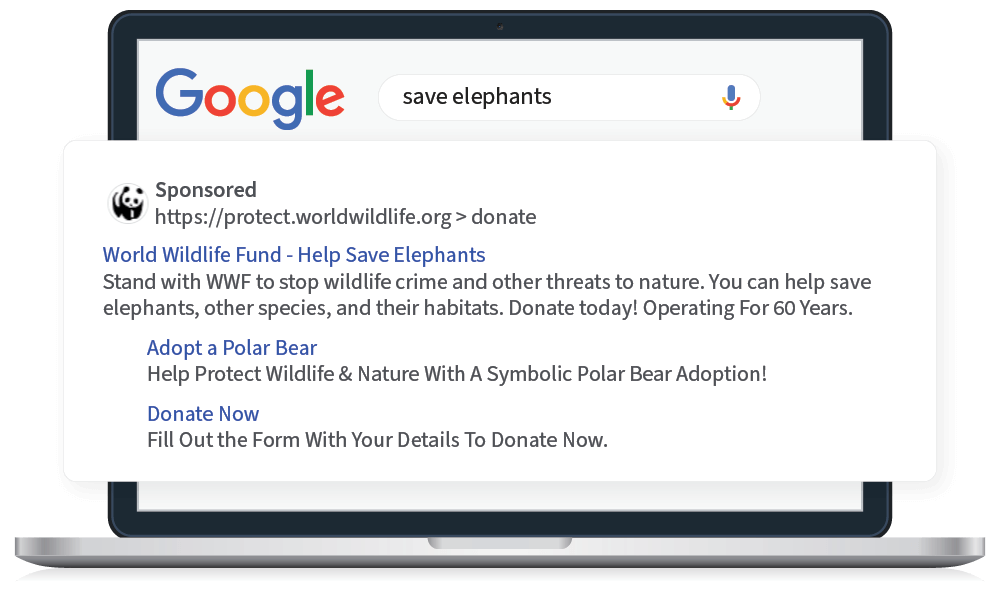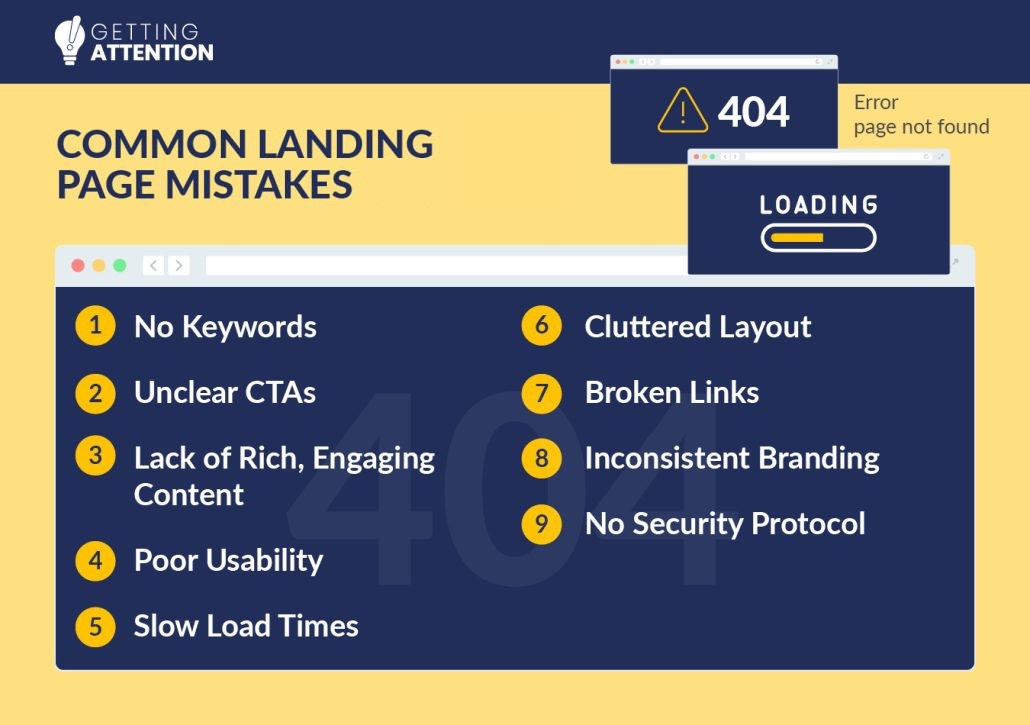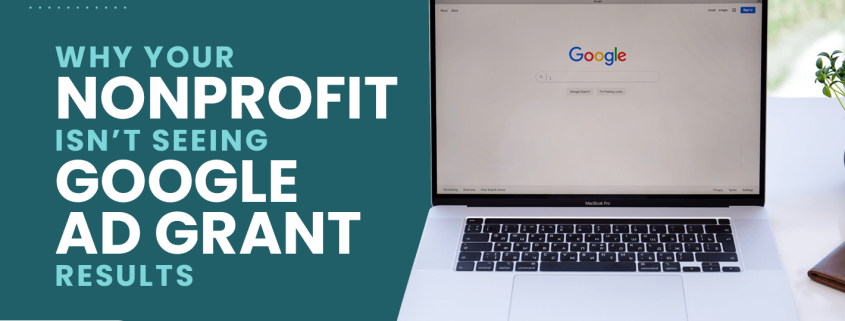Why Your Nonprofit Isn’t Seeing Google Ad Grant Results
Have you been granted $10,000 per month in free advertising but aren’t seeing the results you expected?
Google Ad Grants should be a valuable asset to your nonprofit’s marketing strategy, but if you’re struggling to see results, it can feel like a wasted opportunity. Don’t give up just yet! Understanding why your campaigns are underperforming is the first step to turning things around.
Let’s review several common Google Ad Grant mistakes you’re likely to make and provide helpful advice for resolving these issues.
1. Poor Keyword Choices
Keywords are the words or phrases people search on Google. If a keyword is related to your ad, your nonprofit and all other organizations creating ads for that keyword will bid for the opportunity to have theirs shown. Google refers to this process as an “auction,” and highly competitive keywords tend to require higher bids.
If your keywords are too broad, irrelevant, or overly competitive, your ads may not reach the intended audience. This leads to high bounce rates, wasted ad spend, and low conversion rates.
Additionally, as outlined in Getting Attention’s guide to Google Grant rules, using irrelevant single-word keywords, overly generic terms, or keywords with Quality Scores below three can cause your account to fall out of compliance, which can lead to getting dropped from the Google Ad Grant program.
Prevent this by avoiding generic keywords like “nonprofit donations.” These terms attract a broad range of searchers who may not have any specific interest in your cause, resulting in low-quality traffic. Similarly, steer clear of highly competitive terms with high cost-per-click bids, as winning these auctions is difficult and can drain your budget.
Instead, use phrases and long-tail keywords that are specific to your cause. Think about what potential donors, volunteers, or beneficiaries might search for to find an organization like yours. For instance, an animal shelter could target phrases like “adopt a rescue dog in [city]” or “support animal shelters in [region].” Use tools like Google Keyword Planner to research traffic volumes and competition for these terms, helping you find keywords that balance relevance with affordability.
You can also use negative keywords to filter out irrelevant traffic. For example, an animal shelter could use negative keywords like “wildlife rescue” to avoid appearing in searches for organizations that focus on wild animals rather than domestic pets. This ensures your ads reach the right audience.
2. Low-Quality Ad Copy
Even if you target the right keywords, prospective supporters will only click on them if they’re well-written and persuasive.
Ad copy that doesn’t resonate with your audience results in low click-through rates. Focus on these copywriting elements to create engaging, clear, and relevant ads that address potential supporters’ needs and interests:
- Compelling Headlines: Attention-grabbing headlines convey value and appeal to your target audience. Incorporate keywords naturally and highlight your nonprofit’s mission.
- Informative Descriptions: Write concise descriptions that explain what your nonprofit does, why its story matters, and why people should take action. Emphasize benefits, create urgency, and include your keywords.
- Strong Calls to Action (CTAs): Use clear CTAs that guide users on what to do next, such as “Donate Now,” “Sign Up Today,” or “Get Involved.” Let them know what they’ll find when they click your ad, and ensure they land on a page aligned with the ad’s promise.
- Ad Assets: Call extensions, sitelinks, callouts, and other extensions make your ads more interactive and informative. For instance, sitelinks direct users to additional relevant pages, providing more ways to engage.
Here’s an example of a Google Ad by the World Wildlife Fund that includes these qualities:

Additionally, the Google Ads platform has a responsive search ads feature, which allows users to enter up to 15 headlines and four descriptions. Google then randomly matches them to find the best combinations for different search queries. Think of it as a dynamic form of A/B testing.
3. Ineffective Conversion Goals
The Google Ad Grant program’s goal is to motivate people to take meaningful actions. Ineffective conversion goals result in low-quality leads or missed opportunities to engage audiences.
Some examples of ineffective conversion goals include:
- Pageviews: Simply visiting a page doesn’t indicate meaningful engagement. Visitors may leave without taking further action, like donating or signing up for email updates.
- Time Spent on a Page: Just because someone stays on a page for a certain amount of time doesn’t mean they are more likely to donate, volunteer, or engage in other meaningful ways.
- Generic Email Sign-Ups: If the goal is simple email sign-up without a targeted follow-up campaign, conversions may not translate into active engagement.
- Low-Value Actions: Actions like clicking an image don’t necessarily demonstrate an interest in supporting your mission.
Instead, focus on conversion actions like donations, email newsletter subscriptions, event registrations, volunteer sign-ups, resource downloads, and new membership sign-ups.
To pick effective goals, determine who each ad is speaking to. In other words, define your nonprofit target audience. Maybe one ad for your youth development organization speaks to young professionals who want to give back and develop leadership skills by mentoring at-risk youth. Then, another ad targets parents and families looking for additional resources for their children.
4. Ineffective Landing Pages
Getting users to click on your ad is only half the work. Your landing pages seal the deal.
If the landing pages linked to your ads aren’t optimized or are misaligned with the ad content, users might leave without taking action. Therefore, ensure your landing pages instill trust, load quickly, are easy to navigate, and have a clear call to action.
Look for these common mistakes:

- The keywords your ad targets aren’t featured on your landing page.
- It’s unclear what readers are supposed to do on the page.
- Your page lacks rich, engaging content that maintains users’ attention.
- Your nonprofit’s website is difficult to navigate.
- Your website loads slowly, deterring users from exploring your content.
- Your landing page’s layout is cluttered and unprofessional.
- There are broken links, which signals that your website is outdated.
- Branding is inconsistent, making your website appear untrustworthy.
- The website doesn’t have an SSL certificate, so it’s not secure.
Consider the target action you want people to take. Then, choose a landing page that funnels users toward that action. Let’s say you want to boost registrations for an upcoming fundraising 5K. In that case, you’d send users to a registration page or informational page on your event microsite.
To avoid many of the mistakes above, Kanopi’s nonprofit website maintenance guide explains that your site and its landing pages should clearly guide users to take specific actions with clear CTAs, feature rich and dynamic content, perform well on mobile devices, feature clear layouts, follow your brand guidelines, and adhere to accessibility standards.
To measure effectiveness, track key performance indicators (KPIs) such as bounce rate, time on page, and conversion rate. By continuously monitoring and adjusting your strategy based on KPIs, you’ll ensure your landing pages engage visitors and drive them to complete the desired actions.
The Google Ad Grant is an incredible marketing tool. Staying compliant with the program’s rules is crucial for maintaining grant eligibility, and avoiding these common mistakes can greatly improve your results.
If your ads aren’t meeting expectations, you can always turn to a Google Ad Grant agency. The Google Ad Grant program has a steep learning curve, but these experts already know the ins and outs, helping you drive meaningful results for your mission.
